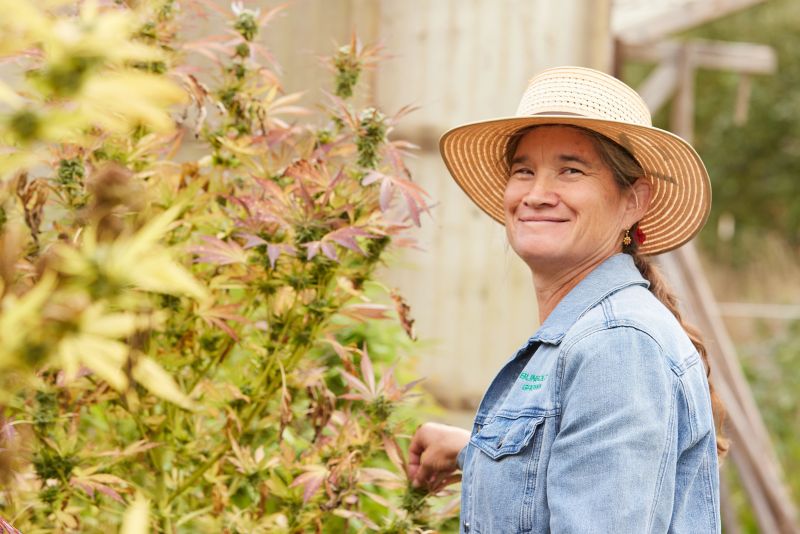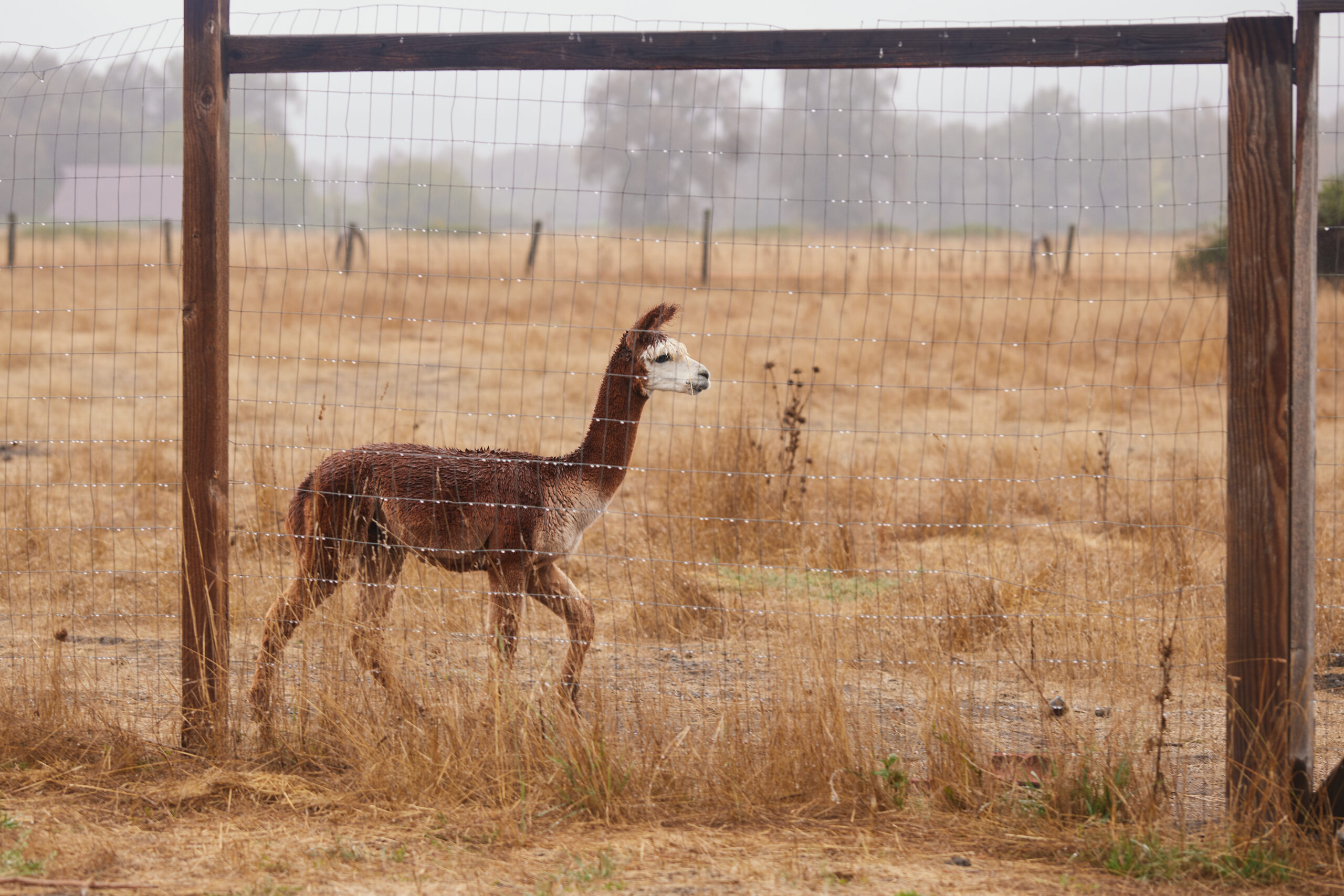Culture & industry
The 6 cringiest stoners you’ll ever meet
Published
1 year agoon
By
admin
My brother, Jack Ryan, is many things. He’s a lawyer, a former weed grower, a devoted father to two cats, and one of the funniest people I know. In the past few years, he’s also become a verified cringe expert, amassing over 1.7 million TikTok followers after posting impersonations of cringe characters.
Known by his many fans as The Slappable Jerk, Jack cultivates characters like the “nice guy,” who disparages women but feels entitled to their affection, the “chronically online guy” who appears out of touch with reality, the “average Redditor” who overlaps somewhat with the chronically online guy but mansplains more passive-aggressively, and the “man-child husband,” the type who calls solo time with his children babysitting. They’re all highly specific and yet familiar. The comments on his videos are often different iterations of, “I know this guy.”
To craft a cringeworthy scene, Jack blends obnoxious personality traits with physical behaviors that can be annoying or neutral, depending on the context. For example, gum chewing. “We’re not going to mind if someone we like is doing it,” Jack said. “But if we don’t like them and they’re giving off this energy that’s bad, then that gum chewing is going to be one of the most insufferable things they do.”
Jack and I have encountered many highly specific, recurring characters over the years. The common denominator between them? Cringe.
6 most cringe stoners
I chatted with Jack about those recurring characters and explained why they’re so likely to rub you the wrong way. Note: this is by no means a dig on stoners in general. Everyone can be cringe, and what’s cool today will almost certainly be cringe tomorrow. Also, if we can’t laugh at ourselves, who can we laugh at?
Ranked from least to most offensively cringe, here are the six cringiest stoners you’ll ever meet:
Weed-is-my-whole-identity kid
“You’re in high school, you’re in college, you’re around really immature kids because you’re an immature kid. But some kids who smoke have to mention it every five minutes — that’s when the cringe comes out,” said Jack.
If you’ve been in any kind of scholastic setting with fellow kids, there’s a high probability you’ve run into this kid. They’ve just discovered weed and its many wonders, and instead of being earnestly jazzed about it, they want everyone to know how cool they are for smoking real weed — not oregano. They can’t leave a room for a few minutes without announcing to anyone who’ll listen, “Time for a smoke. Weed, by the way, not cigarettes.”
As far as cringe archetypes go, this one is far from the worst. There’s something really sweet about picking up a new hobby and wanting the world to know. Y’all should’ve seen me after I went ATV’ing for the first time — I thought I was Mad Max for a whole month.
The guy who never gets high
On the opposite end of the spectrum are the guys who don’t feel anything despite smoking everything. They wear their high tolerance like a badge of honor and shame you if you so much as feel an inkling of a high after ripping a bong.
“They will literally have a look on their face while they’re smoking weed like they’re being tortured,” said Jack. “They just have the most unfun, completely emotionless look on their face. There are a lot of people who will brag about the fact that they can smoke a lot of weed and not get high. It’s not that big of an accomplishment. If you said that about drinking — that you can drink a lot and not get drunk — people would call you an alcoholic.”
Question: what’s the point of smoking weed if you’re not going to get high?
Sativa Guy
Oh, the sativa guy. He’s the weed-is-my-whole-identity kid all grown up. He can’t wait to ask you what you’re smoking, so the second you say “indica,” he can laugh in your face. “Why would I want to smoke something that will leave me tired when I can be out exploring the world?” Jack said. That’s Sativa Guy.
That sense of superiority might be fine when you only have one class on Tuesday that doesn’t start until one in the afternoon, “But when you’re older, and you have a lot of stress and things going on in your life, you don’t want to get all fucked up and have weird thoughts and shit. You just want to watch a movie, laugh, and enjoy yourself.”
So, by all means, smoke a sativa blunt and explore the world. Just know it might be cringe if you judge others for not doing the same.
The self-objectifying influencer
We’ve all seen her on our feeds. She keeps the boobs and blunts era of bro-tastic weed advertising alive and loves to wear lingerie while eating a massive bowl of Coco Puffs. She’s the classic, “I just want to smoke a bowl and cuddle with my boyfriend stoner girl,” Jack said. The key cringe thing here is the sense of judgment toward other people who want to do harder drugs and party their faces off. “I don’t do drugs; I smoke weed,” the posts seem to say.
Unlike cool stoner influencers of all genders — the ones who share educational resources about weed, hot takes, weed memes, and ways to get involved in canna activism — self-objectifying influencer girlies are very obviously centered around cash grabs and the male gaze. It might not be a bad business move, but it is most certainly cringe.
Know-it-all grower
Some context: more than a decade ago, when we were both teenagers, Jack and I grew weed at our mom’s house in central California. To be fair, though, Jack grew dozens of plants under lights while I stuck a clone in a raised bed one summer and called it a day.
He harvested and sold the buds to a small dispensary our high school friend ran — way back when it was much easier to do that, thanks to the highly restrictive regulatory landscape. Along the way, Jack learned a lot about growing commercially viable weed.
Of course, he also ran into many older, legacy growers who took the craft very, very seriously. “These days, you might call them mansplainers, but when I was growing, there were a lot of growers who were douchebags,” Jack remembered. “I was sharing some buds with one of these guys, and he was examining it and told me I did it all wrong. I put ice on the plants to turn the leaves purple, and he said no, I had a phosphorus deficiency. It was really aggravating.”
Average Redditor – stoner edition
One of Jack’s most popular characters is the Average Redditor. He’s an annoying, know-it-all type who can’t help but start every other sentence with, “Well, actually…” Jack came to impersonate the average Redditor after trying to share some of his YouTube videos on the platform and then getting a cavalcade of obnoxious comments.
There’s so much overlap with the know-it-all grower that they’re almost indistinguishable. Still, the Average Redditor stoner is unique in that they typically don’t grow weed themselves, despite having many, many opinions about it. You’ll find them in concentrates forums telling you your hash is trash just by looking at a photo of it, schooling you on the nuanced aroma of Zkittlez, shaming you for using humidity packs, asking you what kinds of products you like just to shit on you if you say pre-rolls, etc. I shudder to think of what they lecture to friends who just want a simple answer about CBD gummies.
Every culture has a small but loud minority of people like this. They’ll make you cringe so hard your face hurts and question whether there’s any amount of weed that could make their behavior tolerable.
How to avoid being a cringey stoner
Okay, so you’re reading through these personas and maybe identifying with some of them. We’ve all been there. What’s a stoner to do?
“Stop the judgment,” Jack said. “Weed culture really has to get out of this whole mindset of being so judgmental — particularly of people who do other substances.”
Right. Wasn’t the goal of legalization initially about acceptance? Stoners love to talk about reducing stigmas, but it seems we create new ones every day — against smokers who also drink, smokers who do it just for fun, smokers who doubt the medical efficacy of weed, and smokers who get high from one puff. As a person who has tried just about every substance and thinks all drugs should be legal, I always feel this judgment in the weed industry.
“I feel like the legalization of weed was an opportunity for people to be more accepting of people who are on substances, whether or not they have an addiction. The people who represent the culture now are just so critical when it starts with a message of ‘Do what you want to do. You shouldn’t be imprisoned, let alone judged, just for smoking a plant.’ Now the message has turned into ‘I am better than you because I smoke this plant.’”
Looking at weed culture from this perspective, cringe might be a wonderful opportunity. We can appreciate how far we’ve come since legalizing weed in many states but also see how far we must go. Cringe is an excellent reminder that weed culture belongs to everyone, and anyone who disagrees isn’t a real one.
You may like
-


Couple arrested with large amounts of weed and molly
-


The Cannabis Rescheduling Ruse – White House Says No Action Planned on Cannabis Reform, Hate to Say I Told You So!
-


Why Quitting Alcohol or Weed Won’t Heal the Pain That Caused You to Start Using Them in the First Place
-


Oklahoma voters could weigh in on adult-use marijuana legalization in 2026
-


Karma Koala Podcast 247: Speaking with Dr. Natalie Corthésy senior lecturer university of West Indies & Enrico Bonadio professor of law City St George’s University of London about their forthcoming Edward Elgar title, “Intellectual Property and Cannabis”
-


MJBizCon offers speakers chance to share cannabis insights, shape industry
Culture & industry
Huckleberry Hill Farms and the history of the Whitethorn Rose cannabis strain
Published
1 year agoon
March 12, 2024By
admin
In the heart of southern Humboldt lies Huckleberry Hill Farms, a legacy outdoor cannabis grow started by John Casali. Unlike many of the regulated farms that sprouted up in the wake of Prop 64, Huckleberry Hill stood through the war on drugs era, and its story is steeped in passion, struggle, and resilience. It also led to the creation of the award-winning Whitethorn Rose cannabis strain.
 Gina Coleman/Weedmaps
Gina Coleman/WeedmapsIn the late 1960s, Casali, a teenager then, was immersed in the art of cultivation, learning the process from his mother. “[She] was my guiding light. She taught me the tenderness required for plants to thrive,” he shared. But the harsh realities of the war on drugs cast a shadow over their beautiful farm life. “My parents decided to cease cultivation due to escalating law enforcement. They got afraid of the multiple helicopters in the air throughout the year, dropping guys down on wires and eradicating weed.”
“It was all I knew; it was all I wanted to do — cultivate and honor what my mom had taught me.” — John Casali
Casali remained rooted in his passion, but it would eventually lead to his arrest and 10-year prison sentence in 1996. “One morning, I woke up to 30 federal agents coming up my driveway. They held a nine-millimeter to my head, and for the next nine hours, they searched my place. A year and a half after that, they came back with an arrest warrant.”
 Gina Coleman/Weedmaps
Gina Coleman/WeedmapsHis arrest, considered one of the longest federal incarcerations for a non-violent cannabis offense, struck a harsh chord, especially for someone who’d never even received a speeding ticket before. And while serving time in prison, tragedy struck his family. His parents, who had been traveling and fishing for months aboard a commercial albacore boat, encountered a devastating accident, and Casali’s mother tragically passed away. He recalled this period as one of the most challenging phases of his incarceration. “Those years tested my spirit, but the community’s support kept me going.”
Casali was released in 2004, and he found himself in a changed landscape, one where attitudes toward cannabis had massively shifted — no more helicopters over properties. Still driven by his passion for cultivation, he resumed his cannabis journey and even received a symbolically powerful gift from a friend: a preserved plant cut that was used to breed the Whitethorn Rose strain, an honor and testament to him and his mother’s legacy.
 Gina Coleman/Weedmaps
Gina Coleman/WeedmapsThis genetic preservation — maintaining a strain for a decade — embodies an emotional journey where friendship, loyalty, and love for the craft transcend the bounds of time and adversity. Casali created this unique strain by crossing Paradise Punch and Lemon OG.
Paradise Punch had been borne from his mother’s collaboration and was crafted for its early harvesting properties, allowing it to avoid possible mold due to October rains. The Lemon OG was a gift from a friend; combining the two was a convergence of heritage and camaraderie. With time, the strain gained the notoriety it so rightly deserved.
Whitethorn Rose, a strain forged during the war on drugs, now blossoms in a reformed era. It’s a symbol of endurance, community resilience, and triumph.
Moreover, testing by Columbia University in New York revealed the specific complexity of Whitethorn Rose. It boasts over 60 different terpenes and a staggering 444 cannabinoids. One such rare terpene found in this strain is selinadiene, which carries potential therapeutic properties.
Its emergence in the regulated folds of California’s cannabis market is due to its persistence and the unbreakable spirit that defines Huckleberry Hill Farms. Collaborations with Belle, Frenchy’s Cannoli apprentice from Heritage Mendocino, amplified its presence, leading to multiple Emerald Cup wins. This year, over 90% of the farm is devoted to cultivating Whitethorn Rose.
 Gina Coleman/Weedmaps
Gina Coleman/WeedmapsThe journey from cultivating alongside his mother in the late ’60s to overcoming incarceration and emerging stronger, determined to honor his roots, defines John Casali’s personality. Huckleberry Hill Farms is inspirational and deeply rooted in honesty, community, and an unquestionable passion for sun-grown cannabis.
Huckleberry Hills Farms is getting ready to hit California’s market, and you must try the amazing Whitethorn Rose strain. This cultivar has a remarkable history and a uniquely exotic floral flavor, making it a distinctive cultivar worth experiencing.
The post Huckleberry Hill Farms and the history of the Whitethorn Rose cannabis strain appeared first on Weedmaps News.
Culture & industry
Terroir and tradition: growing craft cannabis and the art of dry farming at Sunboldt Grown
Published
1 year agoon
March 3, 2024By
admin
When cruising down the Avenue of the Giants in Humboldt County, one might not realize there’s a hidden gem for cannabis enthusiasts just around the bend. Nestled along the Eel River in the heart of the Emerald Triangle lies Holmes Flat, a picturesque locale surrounded by towering Redwoods. The scenery? Simply breathtaking, drawing visitors in with its lush, fertile ambiance.
There, you’ll find Sunboldt Grown and its founder, Sunshine Cereceda, a local legend with soil under her nails and a heart as expansive as the California sky.
 Gina Coleman/Weedmaps
Gina Coleman/WeedmapsBorn in San Luis Obispo and raised in Humboldt since the age of seven, Cereceda grew up amidst the wilderness near Garberville in a community of activists and artists dedicated to preserving the region’s majestic trees. Tending to a garden since she was knee-high, she credits her mother’s green thumb for instilling in her a deep love for organic cannabis cultivation.
The challenges of craft cannabis in a commercial world
Her journey to becoming an Original Gardener is rooted in her upbringing within Humboldt’s activist community, where she formed deep connections to the land. She sold her first pound of weed at 14 years old in order to finance her education, which led to her developing her expertise through years of hard work and dedication. To this day, Cereceda’s OG status persists.
 Gina Coleman/Weedmaps
Gina Coleman/WeedmapsHowever, the shift from the underground market to the passing of Proposition 215 in 1996 and Proposition 64 in 2016 brought about major changes, turning her world upside down. What was once a dance with law enforcement became a tangled web of legalities and over-regulation. She grappled with the demands, yearning for authenticity amidst the new state of chaos. The transition from medical to adult use felt like a crash course in bureaucracy, leaving her fatigued and longing for the simplicity of yesteryears.
California’s legal landscape poses significant hurdles for craft farmers like Cereceda. Mandatory distribution and the absence of direct sales leave traditional farmers at the mercy of intermediaries, diluting the spirit of their craft.
 Gina Coleman/Weedmaps
Gina Coleman/Weedmaps“The beauty of craft does not sell itself,” she said, “We have a big disadvantage not being able to do direct [cannabis] sales … Compliance demands encroach upon precious time meant for nurturing our crops.” She dreams of a future where small farmers receive the support they need to thrive and where craft is cherished and celebrated in the marketplace.
Dry farming and the return to terroir
One of the characteristics that sets Cereceda apart from other growers is her cultivation techniques. She’s a farmer who doesn’t water her plants — a practice known as “dry farming.” It’s a centuries-old technique that involves cultivating crops without irrigation, relying solely on natural precipitation and soil moisture.
 Gina Coleman/Weedmaps
Gina Coleman/Weedmaps“Dry farming is about embracing the land and its natural rhythms,” she explained, “It’s a minimalist approach that allows terroir to shine through, bringing forth the true essence of the plant.” By eschewing irrigation and adopting low-intervention methods, dry farming conserves water and fosters a deeper connection between the farmer, the land, and the final product. “It isn’t suitable everywhere, but in regions like Humboldt, it’s worth pursuing … We avoid water addiction and enable plants to adapt naturally, resulting in a more resilient crop.”
Along with composting and strategic planting, Cereceda has honed her dry farming skills, growing cannabis that embodies the unique characteristics of Humboldt’s soil and climate.
 Gina Coleman/Weedmaps
Gina Coleman/WeedmapsAs the sun dipped below the horizon, it cast a warm glow over the rolling hills of Holmes Flat, where one thing was abundantly clear: Cereceda’s journey was far from over. From navigating the complexities of legalization to pioneering sustainable cultivation methods, she embodies the spirit of innovation and resilience that defines Humboldt’s cannabis culture.
Her focus on craftsmanship and terroir-driven cultivation is encapsulated in her products, growing craft cannabis that maintains the essence of Humboldt’s fertile soil and pristine climate.
The post Terroir and tradition: growing craft cannabis and the art of dry farming at Sunboldt Grown appeared first on Weedmaps News.
Culture & industry
Organic farming and regenerative agriculture
Published
1 year agoon
February 9, 2024By
admin
In the vibrant yet challenging landscape of California’s cannabis community, Sun Roots Farm is a rare gem situated in Covelo, California. Driving up its winding entrance will lead to a picturesque landscape, unveiling the incredible experience of visiting the farm’s gorgeous gardens. There, you’ll be greeted by towering cannabis plants reaching 12+ feet high and weighing an impressive 10 – 20 pounds each.
Founded by Forrest Gauder and Patricia Vargas, Sun Roots Farm is a testament to the resilience and integrity within the cannabis community.
By embracing a lifestyle around sustainability, they’ve created an enchanting, forest-like atmosphere with their approach, growing massive plants requiring a ladder for proper care. This landscape is common in Mendocino County, and due to dry weather, it makes for the perfect environment for growing colossal cannabis plants.
The founders’ vision of regeneration
Over the past 12 years, Gauder and Vargas have transformed Sun Roots Farm into their permanent residence. With its foundation rooted in regenerative agriculture, the couple not only cultivates cannabis plants but also tends to various vegetables, herbs, fruits, fungi, native medicinal plants, and perennial gardens.
To nourish their garden, they rely on contributions from their animals, with coops full of chickens and fields of alpacas serving as an exemplary model of regenerative agricultural practices. The farm aims to increase biodiversity and introduce closed-loop farming, where farmers recycle all organic material back into the soil and the farm. This system fosters a harmonious coexistence between the land and its inhabitants.
Exclusive seeds and strains
The farm takes pride in its commitment to exclusive seed cultivation, a distinctive approach that sets them apart. Gauder described the process: “We grow all our plants from seed yearly. From the year before, we’ll select pollen and put it on certain plants to make new [strains] — we’ll then collect those seeds. By the middle of February, we’ll crack open the chosen varieties, starting them in a greenhouse … and propagating them until they reach five-gallon pots.”
The decision to grow exclusively from seed is rooted in the farm’s philosophy of embracing genetic variability and maximizing plant vigor. “The reason behind growing from seed … is the genetic variability,” said Vargas. “We grow exclusively from seed. Local breeding has played a pivotal role in shaping plants that are finely adapted to the valley’s conditions, showcasing positive characteristics such as mold resistance, pest resistance, frost resilience, and more.”
Sun Roots Farm’s staple strain is Velvet Purps, bred locally over ten years ago. This strain descends from the valley and is made from various crosses by Gauder’s family and colleagues. Its origin begins with Jah Goo, crossbred with its brother T2 and Magic Bus, giving rise to a cultivar with impressive purple characteristics.
“The plant produces anthocyanins to protect itself, but it’s also purple,” explained Gauder. “You can find anthocyanins and all sorts of fruits and vegetables, too. It’s the pigment, the color. This compound has beneficial aspects when consumed by humans, like antioxidants, and it protects the plant. We had a bad frost a few years ago that destroyed a lot of gardens around here, but all our purple plants were just fine.”
Packed with trichomes and a captivating blend of berry and pine aromas, Velvet Purps luxuriously unfolds on the palate. This unique strain, locally bred and cultivated by Sun Roots Farm and a select few friends only, expresses a distinctive charm. Beyond its sensory delights, it delivers a tranquil and relaxing buzz, making it an ideal choice for evening consumption.
In a market saturated with options, the exclusivity of strains like Velvet Purps emphasizes the farm’s commitment to offering something truly exceptional.
A farm dedicated to sustainable practices
The farm is also Dragonfly Earth Medicine (DEM) certified. “To be DEM is to achieve a certification beyond organic through third-party verification,” explained Vargas, “It’s a community committed to intentional growth and the creation of closed-loop systems.”
Sun Roots Farm maximizes what the land naturally provides, whether it’s blackberry vines for tea or alpaca manure from their animals. “It’s similar to a homesteading lifestyle,” Vargas continued, “incorporating the cultivation of cannabis with an element of integrity into the product.” From closed-loop systems and water conservation to wildlife sanctuaries and companion planting, the farm is a testament to sustainable living techniques.
Vargas also emphasized the importance of observation and mindfulness in their approach, “Take a moment to observe before you go ahead and start harvesting or before you go ahead and start crunching all over the earth.” Gauder added, “As long as we keep stuff covered in the garden, magic always happens. So we’re feeding the bugs, which eat the material on the ground that feeds the plants. It’s a continual cycle of life, rebirth, death, life, rebirth, death.”
The farm extends its commitments beyond the cultivation season. After harvest, they break down plants, mulch with oak leaves, and cover them with hay, creating a winter blanket that transforms into a layer of beautiful topsoil come spring.
At Sun Roots Farm, a calming environment and sustainable living encourage a deeper connection to the products they make and the ones we consume. The farm is a reality where integrity, intention, and regenerative practices converge to create a sanctuary of sustainable cultivation in the heart of California.

Couple arrested with large amounts of weed and molly

The Cannabis Rescheduling Ruse – White House Says No Action Planned on Cannabis Reform, Hate to Say I Told You So!

Why Quitting Alcohol or Weed Won’t Heal the Pain That Caused You to Start Using Them in the First Place

Oklahoma voters could weigh in on adult-use marijuana legalization in 2026

Karma Koala Podcast 247: Speaking with Dr. Natalie Corthésy senior lecturer university of West Indies & Enrico Bonadio professor of law City St George’s University of London about their forthcoming Edward Elgar title, “Intellectual Property and Cannabis”

MJBizCon offers speakers chance to share cannabis insights, shape industry

The Best Tariff Friendly Cocktails

Cannabis Consumers Are Being Hit By The Tariffs

The Best Tips To Update Your Wardrobe

Former New York Knick Iman Shumpert debuts ‘TSA Approved’ legal cannabis brand

Distressed Cannabis Business Takeaways – Canna Law Blog™

United States: Alex Malyshev And Melinda Fellner Discuss The Intersection Of Tax And Cannabis In New Video Series – Part VI: Licensing (Video)

What you Need to Know

Drug Testing for Marijuana – The Joint Blog

NCIA Write About Their Equity Scholarship Program

It has been a wild news week – here’s how CBD and weed can help you relax

Cannabis, alcohol firm SNDL loses CA$372.4 million in 2022

A new April 20 cannabis contest includes a $40,000 purse

Your Go-To Source for Cannabis Logos and Designs

UArizona launches online cannabis compliance online course
Trending
-

 Cannabis News2 years ago
Cannabis News2 years agoDistressed Cannabis Business Takeaways – Canna Law Blog™
-

 One-Hit Wonders2 years ago
One-Hit Wonders2 years agoUnited States: Alex Malyshev And Melinda Fellner Discuss The Intersection Of Tax And Cannabis In New Video Series – Part VI: Licensing (Video)
-

 Cannabis 1012 years ago
Cannabis 1012 years agoWhat you Need to Know
-

 drug testing1 year ago
drug testing1 year agoDrug Testing for Marijuana – The Joint Blog
-

 Education2 years ago
Education2 years agoNCIA Write About Their Equity Scholarship Program
-

 Cannabis2 years ago
Cannabis2 years agoIt has been a wild news week – here’s how CBD and weed can help you relax
-

 Marijuana Business Daily2 years ago
Marijuana Business Daily2 years agoCannabis, alcohol firm SNDL loses CA$372.4 million in 2022
-

 California2 years ago
California2 years agoA new April 20 cannabis contest includes a $40,000 purse



